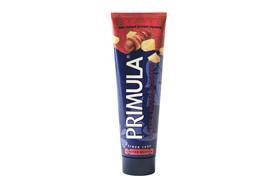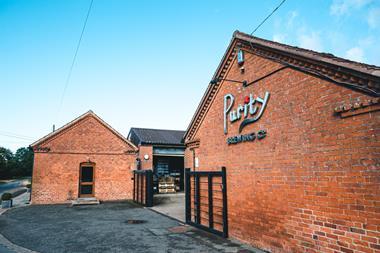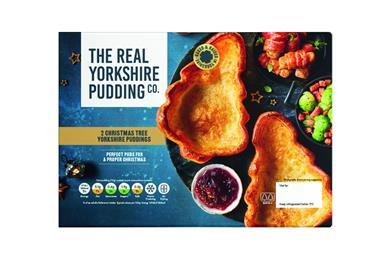THE APPLIANCE OF SCIENCE
For marketing man Paul Siviter, formerly of Bulmers, there are two types of marketing guru: those with the creative "pretty picture" juices and those with statistical number crunching talent. He is definitely the latter.
"The first thing I wanted when I joined United Norwest as head of food marketing in January 1998 was some hard research.
"Interpreting the data from each store was essential to build up a picture of what our customers wanted.
"And marketing a consistent and strong United Norwest message through all the fascias to a whole range of different customers is what the society needed," says Siviter.
That's not to say the existing team at United Norwest didn't know its shoppers and commonsense is also clearly key to marketing decisions.
"There's no rocket science in good retailing practice," Siviter admits.
But he did feel there was no real structure in place to check whether the assumptions being made were right.
"We couldn't track what was going on in the marketplace and that was a gaping hole in our strategy."
This wasn't helped by a lack of technology at that time.
Having done his homework, Siviter quickly realised that his biggest challenge would be changing the perception that Co-op prices were out of line with the rest of the market.
By talking to its consumers through a six month research programme, it was clear they held a general cynicism towards c-store pricing. So it was time for Beat This!
Siviter's brief was to create more than a promotional campaign that alone was not the way to change shoppers' habits.
"Through Beat This! we guaranteed at least 25% better value, whether through price or added volume of product for customers," says Siviter.
He says the strategy also helped buyers sharpen the focus on their relationship with suppliers.
"We needed to give a consistent message that working with United Norwest in this way would be good news for them."
Another area of scepticism that had to be addressed was price consistency: "We had to offer the same deals right across the estate to make the value message work in our c-stores," he says.
Siviter adds with a shrug: "Most suppliers embraced what we were doing, but some still have the perception that the multiples can do price promotions better."
But he is convinced there are enough opportunities out there to make the concept work well.
"I am a great believer in the power of brands. If a supplier doesn't want to discount their brand by 25%, then that's fine, but the brand will have to sell itself from the shelf rather than be part of our promotional campaign."
Siviter is quite clear if suppliers won't compromise, why should United Norwest?
A year on from the launch of Beat This! Siviter says he and his team are revisiting the strategy, checking the results of a tracking programme and looking at the way forward.
Just for the moment he is keeping quiet on whether Beat This! will be swapped for something else.
But the society has already recognised the need to offer more impulse buys in its stores, introducing the successful programme of WIGIG (when it's gone, it's gone) promotions offering products at one off, low prices.
"But we are not paranoid about price. We understand that c-store shoppers' needs are different to those of a main food shopper and there are other areas of the operations which are just as, if not more important than, price."
It's not only price about which customers have misconceptions.
Siviter had his work cut out for him in the customer service department, too.
His research confirmed shoppers saw the Co-op as people friendly, especially to older shoppers, but inefficient.
"For our mainstay, traditional, older, top up shopper, we were doing everything right providing a mix of service and let's be honest here social interaction," he smiles.
"But we had to address the emerging profile of our c-store shopper. They want brisk, professional service, and if you can combine the two then you're onto a winner."
As a result, Siviter recruited a dedicated team of six to work with store staff to improve service.
"Focus on Customer Care was never developed to be too prescriptive we have an important message to get across but we have a good mix of staff and didn't want them to feel dictated to."
Mystery shoppers visit each store once every month as part of the scheme.
Staff are tested on a whole range of criteria, including speed of service, politeness and helpfulness.
With gold, silver and bronze awards for the top scorers as well as prizes for a whole store's staff, Siviter admits that it's a good "carrot" exercise to get individuals on the shop floor involved in improving customer service.
But it is a serious business.
He says he has evidence which confirms the direct correlation between the level of service at a store and its turnover.
Managers of poor performing stores will have to act to ensure staff are up to speed. "We'll name and shame those who aren't cutting the mustard at our quarterly managers' conference," says Siviter.
While it was clear from the moment he took the job that consumers liked the stores, Siviter has been busy making sure they choose them over others in their area and that means getting the positioning and branding right.
"Shopping at the Co-op has always been about community retailing but we weren't doing anything to underpin this no one really knew what it meant," he confesses.
Siviter pointed out to fellow management that the fact the group had more stores in its catchment area than any other meant it was ripe for opportunity.
And the main way to reinforce this was through the network of local schools.
"Everyone knows Tesco's computers for school initiative we decided to start a similar project to get more sports equipment into schools," he says.
A year on and 1,500 schools have signed up, with more than £200,000 worth of kit donated through vouchers collected by customers.
"Being the community retailer means taking on board what motivates the people who live there and education is a crucial part of that."
Store environment has also been given a shake up in the past year.
Siviter says the revamp of the Late Shop c-stores was the first time a long, hard look had been taken.
"The red and yellow livery had to go, as did the blocked out windows they were dated and did nothing to encourage consumers," he says.
The store at Offerton became one of five pilots in a £10m redevelopment programme for the c-store estate.
"It was essential we keep in mind the varying uses customers had for the stores they're grocers, newsagents, everything rolled into one," comments Siviter.
And the positioning of the sub-brand within the Co-op's main brand remains important. Siviter says the Village Store fascia continues to work well in rural areas.
"If you took all our outlets and drove round our core trading area, you'd pass a store every six minutes but until we have consistent branding, the average consumer wouldn't know that," he laughs.
"My job is to inject some science into the gut feeling we have that the Co-op Late Shop brand works and make it work better."
{{Z SUPPLEMENTS }}
Close menu
- Home
- Retail & Wholesale
-
Products & Suppliers
- Back to parent navigation item
- Products & Suppliers
-
Product Categories:
- Back to parent navigation item
- Product Categories:
- Alcoholic drinks
- Bakery
- Cereals & breakfast
- Cheese
- Chicken & poultry
- Chocolate
- Confectionery
- Crisps, nuts & snacks
- Dairy
- Fish
- Fresh produce
- Frozen
- Household
- Meat
- Own Label
- Sauces & condiments
- Seasonal
- Soft drinks
- Vaping
- Vegan & plant-based
- World foods
- Suppliers
- People
- Reports & Data
-
Topics A-Z
- Back to parent navigation item
- Topics A-Z
-
Popular topics:
- Back to parent navigation item
- Popular topics:
- Cost of living crisis
- Crime
- Deposit Return Schemes
- Finance
- Government & Regulation
- Health
- Inflation
- Loyalty
- Marketing
- Mergers & Acquisitions
- New Product Development
- Sourcing
- Supply chain
- Sustainability & environment
- Technology
- Ultra Processed Foods
- Vaping
- A-Z all topics
- Content by type:
- Events
- Ask iA (beta)
- Subscribe now
Sign in to comment on this article
Not logged in before? Register for FREE guest access today.
You will be able to:
- Read more stories
- Receive daily newsletters
- Comment on stories
Advert

















No comments yet